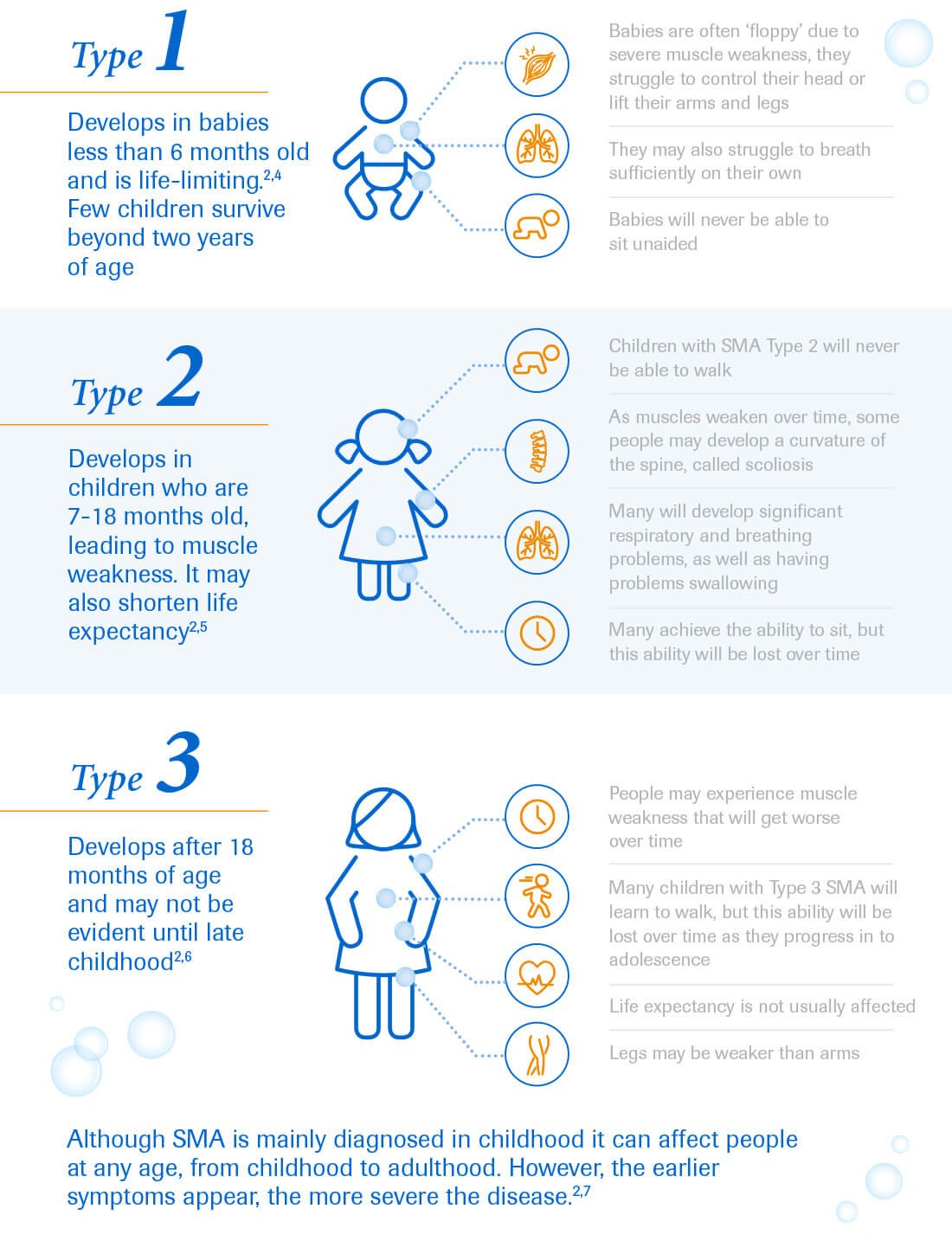What is SMA?
SMA is a severe, progressive rare neuromuscular disease that can be fatal. It affects approximately one in 10,000 live births globally and one in 7,744 live births in India and is the leading genetic cause of infant mortality. Although SMA is mainly diagnosed in childhood it can affect people at any age, from childhood to adulthood. However, the earlier the symptoms appear, the more severe the disease. Without treatment, babies with the most severe form of SMA, Type 1, cannot sit unsupported, 68% die by the age of two and 82% by the age of four.
SMA is caused by a mutation of the survival motor neuron 1 (SMN1) gene, which leads to a deficiency of SMN protein. This protein is found throughout the body and is essential to the function of nerves that control muscles and movement. Without it, nerve cells cannot function correctly, leading to muscle weakness over time.
There are five types of SMA (Types 0, 1, 2, 3 and 4), which are defined by the age at which symptoms first appear and when the highest physical milestone is achieved. Of these, SMA Type 1, 2 and 3 are the main ones. Depending on the type of SMA, an individual’s physical strength and their ability to walk, eat or breathe can be significantly diminished or lost.

The goals of treatment in the most severe form of the disease are survival and attaining motor milestones. In less severe forms of the disease, treatment aims to help people with SMA fulfil their life expectations in a way that is meaningful to them e.g. turning pages in a book allows people to study and potentially achieve career goals.
SMA is life-limiting and many everyday activities which one engages in easily can become physically demanding for an SMA patient. To complicate things further, this rare neuro-muscular disease has only 3 treatment options available across the globe of which until recently none were available in India.
References